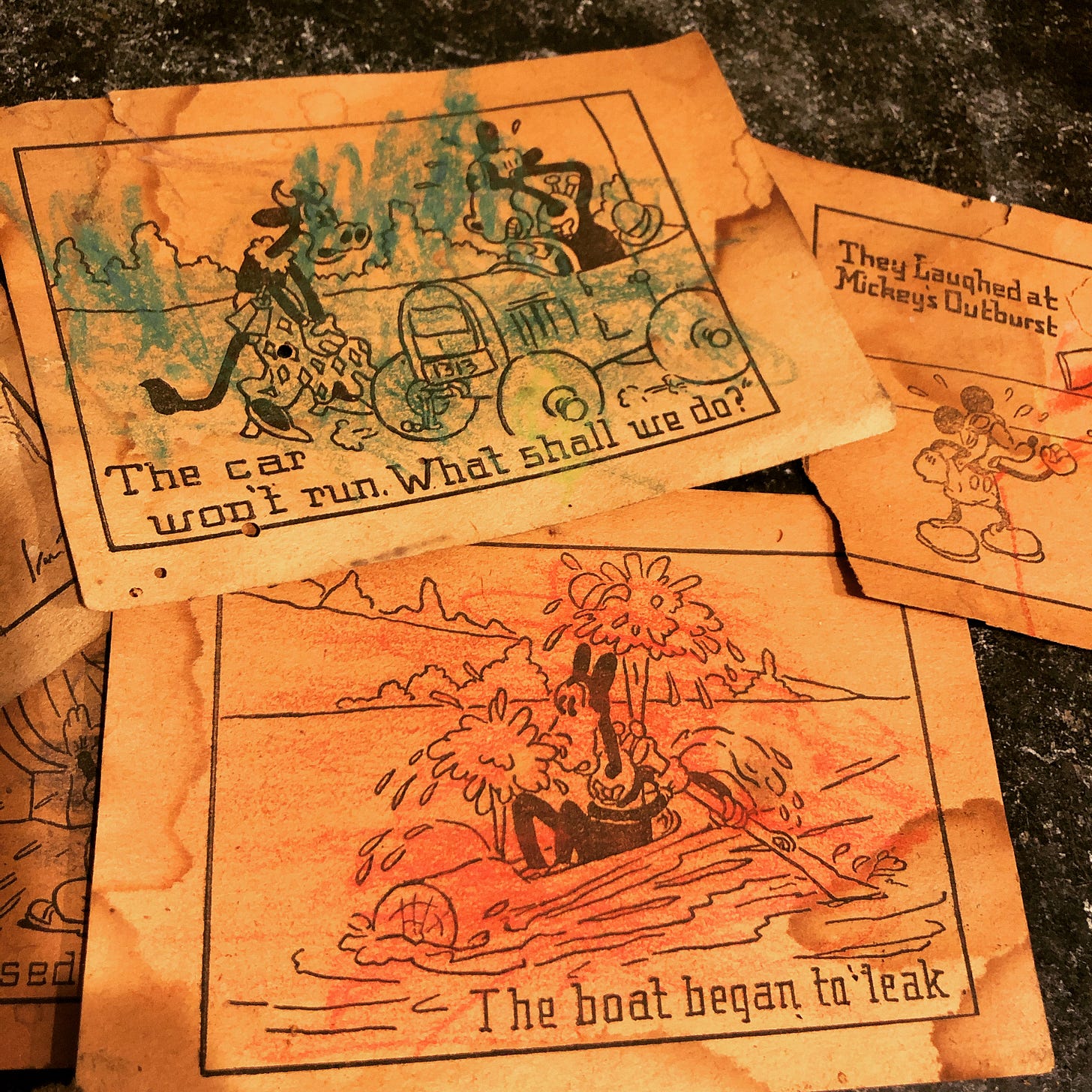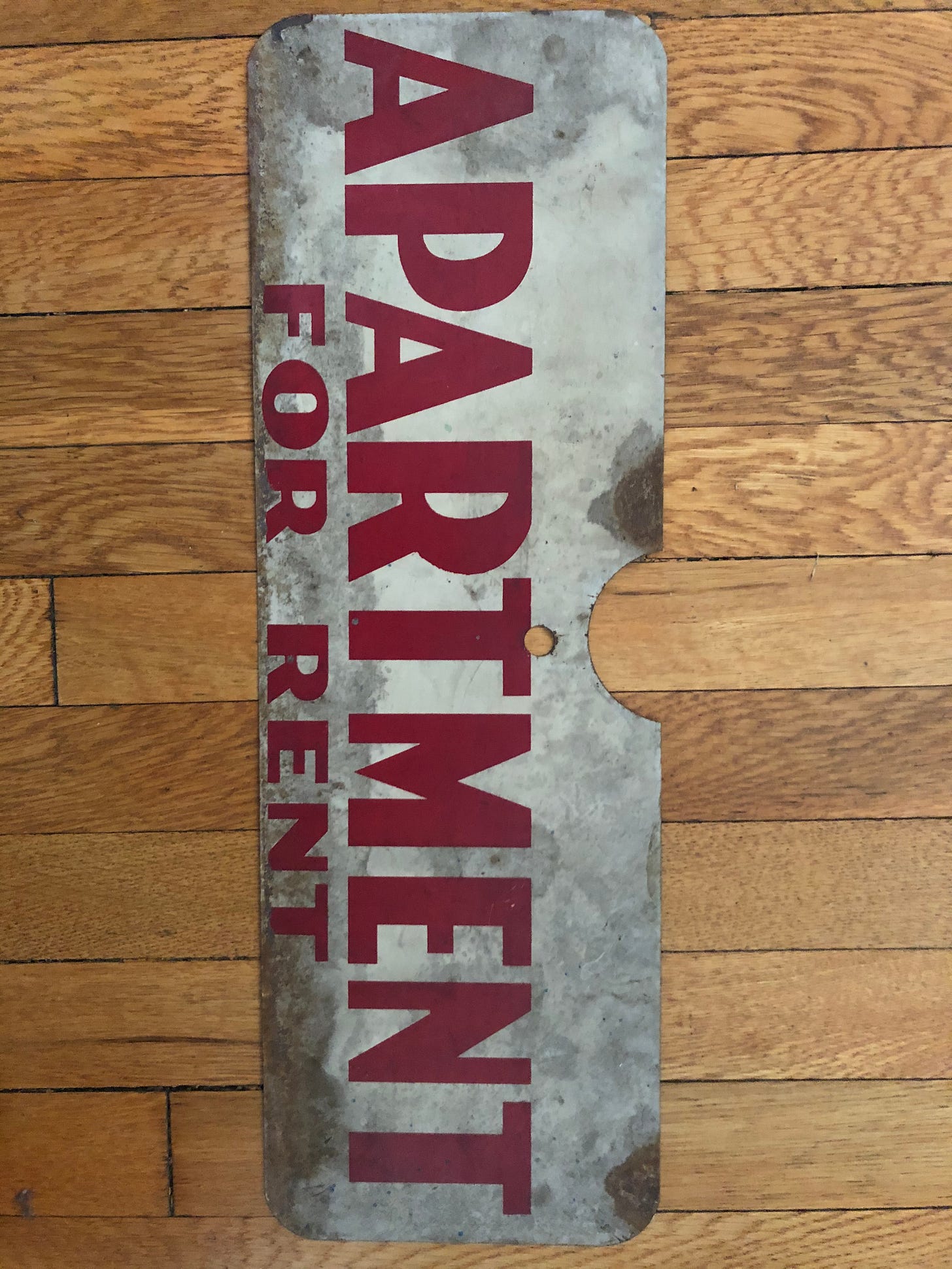The house I live in dates to 1922, a good year for Modernism and for DC Crafstman-style “daylighter” rowhouses. (“Daylighter” because they were designed to let in as much daylight as possible, so they’re brighter and airier than a lot of rowhouses.) Owning an older house prepares you for surprises, often of the unpleasant variety: a leak here, a creak there, a roof that really needs to be replaced, a door frame that used to be plumb and now can’t quite hold the door it once encompassed snugly.
But our old daylighter, which I love in spite of its idiosyncrasies, also surprises us in delightful ways. Yesterday we put up our Christmas tree, a yearly ordeal that requires a dive into the closet under the basement steps to pull out the boxes of ornaments and seasonal flair.
To get to the boxes, we had to take everything out of the closet: suitcases, cat carriers, flotation devices, a wicker picnic basket that gets used twice a decade. The usual domestic flotsam and jetsam.
Excavating our way to the boxes, we noticed the makeshift ceiling in the closet was falling down. We decided to pull it off—it was just a thin sheet of plywood nailed to the underside of the basement steps, hardly an Architectural Feature—and in the process we found a mess of cobwebs and dust.
We also found these:

They’re cartoon panels that feature Mickey Mouse, Clementine Cow, and Horace Horsecollar and some misadventures with a balky car and a leaky boat. I’m guessing they date back to the 1940s, when the house sheltered a tobacconist, his wife, and their two kids along with two lodgers. (Housing was in short supply in wartime DC, and many houses took in boarders. We found a vintage APARMENT TO LET sign in the garage when we moved in.)
Some long-ago child festooned the panels with red and green crayon or pencil, and then must have slipped them between the gapped risers of the basement steps, as kids do. The house kept these little slips of paper safe all this time for us to find. Thank you, house.

This week’s links include small good things to help make the run-up to the holidays a little more festive. [N.B. I had a couple of eco-catastrophe stories on my list to share this week that I am going to skip today because the sun is shining, the house smells like Xmas tree, and there is still much to be merry and bright about in the world.]
1) Send a fellow book-lover a holiday card via LibraryThing’s annual Holiday Card Exchange. (The deadline to sign up is Tuesday, Dec. 11.) If you don’t know LibraryThing, it’s a personal-library-cataloguing site that’s also a hub for readers and authors. I love it and mean to use it more.
2) Speaking of holiday cards, we’ve been enjoying a letterpress renaissance the last few years. I am a big fan of D.C.’s own Grey Moggie Press. This year’s newest card offering: “All I want for Christmas is to get Baby Shark out of my head.”)
3) I want to know more about this project that explores the raw materials and carbon footprint required to make Henry David Thoreau’s eco-classic Walden. (Tangentially related: Thoreau and I share a birthday, though I expect my carbon footprint is a lot higher than his.)
4) While we’re talking about Thoreau: The loveliest thing I read this week was “Cohabiting with Beautiful Weeds,” an essay in the TLS by the incomparable Lydia Davis, who could make a grocery list lyrical and startling. Prompted by a book of Thoreau’s observations on wild plants (this one, I think), Davis celebrates the small botanical treasures that fill her yard year-round once she learns to see them and let them be. It’s a call to notice the small things.
There was a more sombre reason for my interest in wild plants this year. I felt more acutely now, as increasingly grim news came in every day, that the generosity of the earth and the seasons, even in one yard, should not be ignored or carelessly dismissed, but consciously valued and noted. Thoreau lamented that so few people noticed the wildflowers. It is hard to miss the beauty that flashes by the car window: the pastel phlox, the wild roses with their sweet fragrance, the dark orange day lilies and blue chicory, the white dogwoods in the woods. But in my own yard I had ignored the more humble volunteers in the waste places, had uprooted pretty intruders from the flowerbeds, and trampled, in the lawn, the drifts of ghostly white Antennaria (called pussy-toes in my books and admired by Thoreau as mouse-ears).
5) Miguel the electric eel is lighting up the Tennessee Aquarium. (He also has a zippy Twitter feed.)
6) “If I’d known I was going to have to say this whole book out loud, I would have written a better one. Or maybe I wouldn’t have written one at all”: Tim Dowling discovers that audiobook narrators do a lot more than just sit there and read. (I was fascinated by this article.)
7) This list of the “essential” books about Washington left me dissatisfied—did we really need a roundup of “books about Brett,” especially at this time of year?—but it’s not a bad starting point if you need one. I was especially glad to see Edward P. Jones’ essential collection Lost in the City included, along with Natalie Hopkinson’s Go-Go Live: The Musical Life and Death of a Chocolate City.
8) “The best thing you can do is not buy more stuff”: Adam Minter talks to NPR’s Terri Gross about his new book, Secondhand: Travels in the New Global Garage Sale. It’s a good listen for this season of frenzied shopping. I finished the book this week; it’s a deeply reported, eye-opening investigation of where the world’s discards go.
Wishing you small surprises of the delightful kind, this week and every week.
Thanks for reading!
Cheers,
Jen


